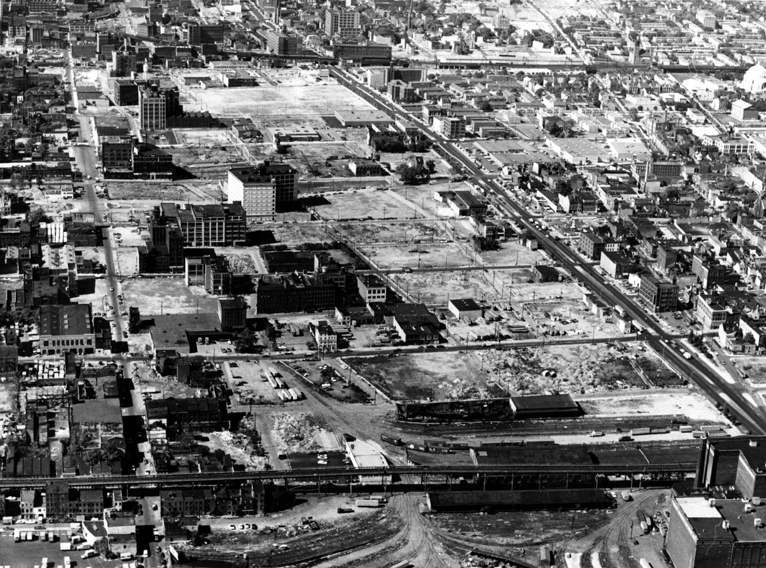Callowhill Reimagined: How a failed urban renewal project yielded a new creative office district
In 1963, the Philadelphia Inquirer anticipated a Philadelphia of the future, publishing an article entitled “Phila. Of 1982 Envisioned as Efficient Business Core for Area of 8 Million”. In the article, the City Planning Commission laid out their ambitious proposal for development around Center City. Key to the vision was the development of the Callowhill Industrial Park, part of the broader Callowhill East Redevelopment Project. The article states:
Industrial development aided by urban renewal, will fill the Callowhill Industrial Park, an area stretching from the Delaware River to 20th Street, bounded by the Vine Street Expressway and Spring Garden Street.
Since 1838, when the Reading Railroad laid tracks along Noble Street eastward to the Delaware River, Callowhill has represented Philadelphia’s industrial core. Along the train tracks, foundries, breweries, textile, automotive, and locomotive factories bloomed. Throughout most of the twentieth century, the viaduct served as an important conduit for coal, goods, and passengers to and from Center City Philadelphia.
How, then, has the neighborhood evolved since the City Planning Commission’s master plan? Was the vision for the Callowhill Industrial Park ever realized?
In the mid 1960s, in preparation for the Callowhill East Redevelopment Project, swaths of the neighborhood – a rectangular zone from Second to Ninth Streets between Callowhill and Spring Garden Streets – were deemed blighted and razed with the goal of creating the industrial park. The Philadelphia Industrial Development Corporation (PIDC) offered the roughly twenty blocks of open land to manufacturing firms and some industrial facilities were constructed.
However, by the 1970s, deindustrialization had swept Philadelphia and the project proved unsuccessful. Philadelphia’s once extensive and varied manufacturing industries became less viable or moved from the city to outlying areas as changing technologies and markets impacted business.
For decades Callowhill remained largely overlooked, characterized by stretches of parking lots, underutilized warehouses, and empty factories. Moreover, the neighborhood effectively cut off Old City Philadelphia to the south and Northern Liberties to the north.
Fast forward to the present, Callowhill is experiencing a renaissance. The neighborhood, a natural link between Center City and hip northern neighborhoods, is ripe for revitalization. Reimagination of the neighborhood is taking place thanks to thoughtful development, the rehabilitation of abandoned industrial buildings into creative office space, the return of breweries and other restaurants, and the construction of the Rail Park.
With this revitalization, comes a celebration of the Callowhill’s industrial past. Developers are preserving the area’s original architecture and commemorating the authenticity of the neighborhood. Callowhill has become a testament to the unintentional consequences of urban renewal projects. From this poorly contemplated city planning project, has sprung a vibrant village and office district catering to the creative class.
Callowhill, 1969
Image Courtesy of Temple University Urban Archives






